Thursday, 22 December 2011
last train to clarksville
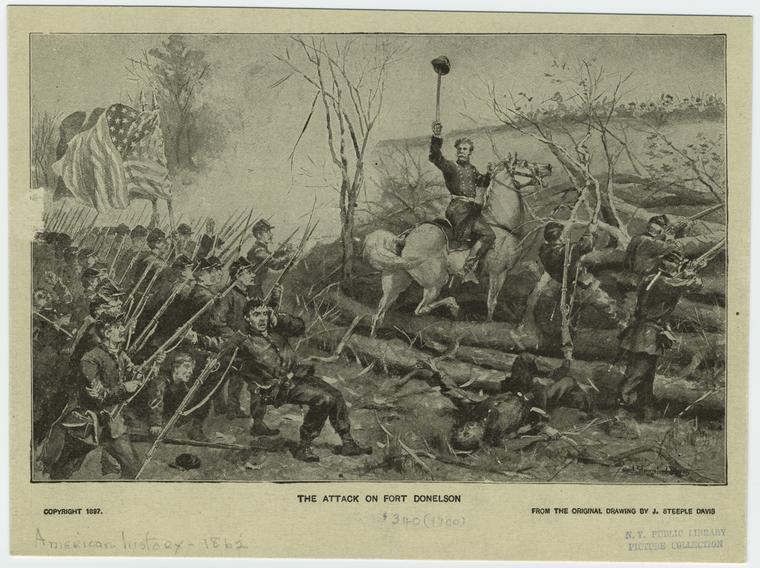 n November 1861, Confederate troops began to build a defensive fort that was strategically positioned on top of a 200′ high bluff overlooking the confluence of the Red River and the Cumberland river,
n November 1861, Confederate troops began to build a defensive fort that was strategically positioned on top of a 200′ high bluff overlooking the confluence of the Red River and the Cumberland river, 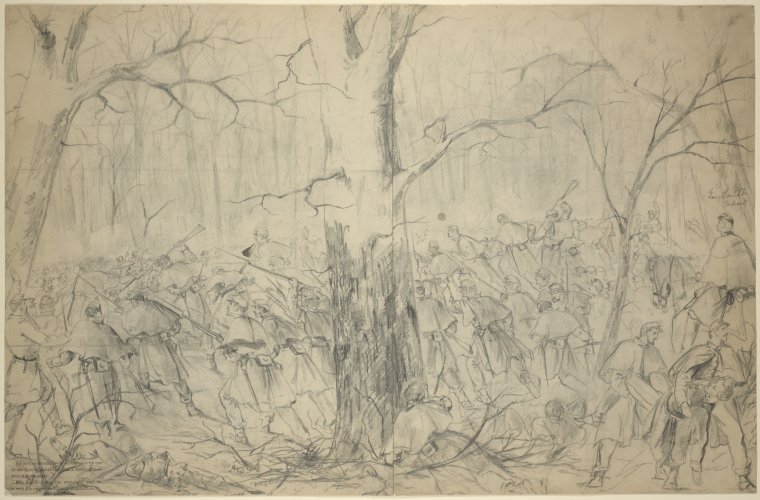 and was intended to guard not only the river approaches to Clarksville, TN, but to protect Nashville
and was intended to guard not only the river approaches to Clarksville, TN, but to protect Nashville  Tennessee as well which lays further up river.A telegram sent from Clarksville in February 19, 1862.Report of Flag-Officer Andrews H. Foote, U. S. Navy.above new hope design
Tennessee as well which lays further up river.A telegram sent from Clarksville in February 19, 1862.Report of Flag-Officer Andrews H. Foote, U. S. Navy.above new hope design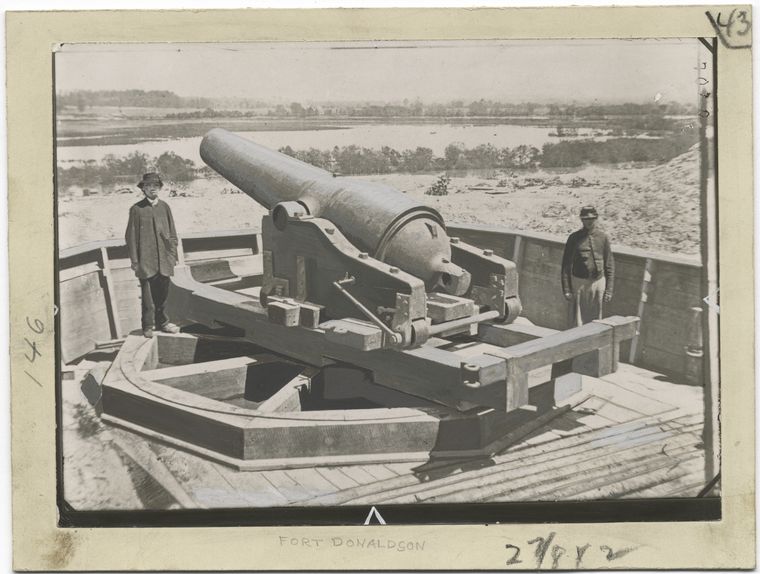
U. S. FLAG-STEAMER CONESTOGA, Fort Donelson, February 20, 1862.

SIR: I have the honor to inform the Department that I left Cairo with the Conestoga, Lieut.-Commander Phelps, on the 18th instant, having previously dispatched the gunboat Cairo, Lieut.-Commander  above perry miniatures a pretty anti patico foirm to be honest like steve weston but good stuff
above perry miniatures a pretty anti patico foirm to be honest like steve weston but good stuff
 above perry miniatures a pretty anti patico foirm to be honest like steve weston but good stuff
above perry miniatures a pretty anti patico foirm to be honest like steve weston but good stuffBryant, and six mortar boats, in charge of Lieut. Bishop and Lieut. Lyford as ordnance officer, for 

Yesterday (on the 19th instant) I came up the river on an armed reconnaissance with the Conestoga and Cairo, having Col. Webster, of the Engineer Corps, and chief of Gen. Grant’s staff, on board. On nearing Fort Defiance, near Clarksville, we found a white flag displayed, and on landing found the fort  deserted. Lieut.-Commander Phelps and Col. Webster took possession of the fort, the former hoisting the American flag. There were three guns mounted on this fort, three in the fort near the City, and two
deserted. Lieut.-Commander Phelps and Col. Webster took possession of the fort, the former hoisting the American flag. There were three guns mounted on this fort, three in the fort near the City, and two in a fort a short distance up the Red River.
in a fort a short distance up the Red River. Clarksville, the only station to become a city, was established in 1784 near the confluence of two rivers.
Clarksville, the only station to become a city, was established in 1784 near the confluence of two rivers.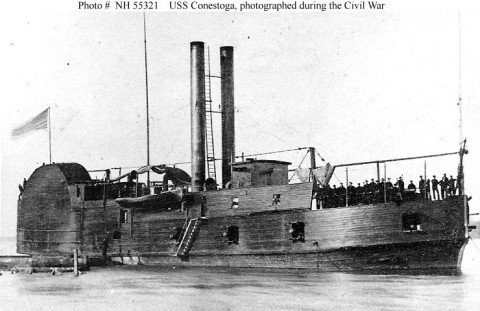
 deserted. Lieut.-Commander Phelps and Col. Webster took possession of the fort, the former hoisting the American flag. There were three guns mounted on this fort, three in the fort near the City, and two
deserted. Lieut.-Commander Phelps and Col. Webster took possession of the fort, the former hoisting the American flag. There were three guns mounted on this fort, three in the fort near the City, and two in a fort a short distance up the Red River.
in a fort a short distance up the Red River. Clarksville, the only station to become a city, was established in 1784 near the confluence of two rivers.
Clarksville, the only station to become a city, was established in 1784 near the confluence of two rivers.
Gunboats coming; they are just below point; can see steamer here. Will try and
see how many troops they have before I leave. Lieutenant Brady set bridge on
fire, but it is burning very slowly and will probably go out before it falls.
W. H. ALLEN.In mid-afternoon the gunboats rounded a sharp bend in the river opposite Linwood landing, several miles below Clarksville. Directly ahead loomed a high bluff, its crest scarred by a recently erected earthwork-Fort Defiance. As the bluejackets manning the Cairo’s bow battery trained their guns on the fortification, the lookouts saw a white flag snapping in the breeze. The Stronghold had been evacuated the day before. On the boats steamed passing the forts’ silent guns. As they approached the confluence of the Red and Cumberland Rivers, the federals sighted a second earthwork, Fort Clark. Here no flag was flying. As the Cairo and Conestoga were heaving to, a “very dirty white flag” crept slowly up the staff. Flag officer Foote sent a party lead by Lieutenant
The Stronghold had been evacuated the day before. On the boats steamed passing the forts’ silent guns. As they approached the confluence of the Red and Cumberland Rivers, the federals sighted a second earthwork, Fort Clark. Here no flag was flying. As the Cairo and Conestoga were heaving to, a “very dirty white flag” crept slowly up the staff. Flag officer Foote sent a party lead by Lieutenant  Phelps to take possession of the fort and to raise the Stars and Stripes. From the townspeople the sailors learned at Fort Clark a strong wind had blown down the white flag and it had been soiled by the heavy rain of the previous evening.On reaching Clarksville I sent for the authorities of the City, and soon after the Hon. Cave Johnson, the mayor, and Judge Wisdom came aboard, stating that the rebel soldiers had left the City,
Phelps to take possession of the fort and to raise the Stars and Stripes. From the townspeople the sailors learned at Fort Clark a strong wind had blown down the white flag and it had been soiled by the heavy rain of the previous evening.On reaching Clarksville I sent for the authorities of the City, and soon after the Hon. Cave Johnson, the mayor, and Judge Wisdom came aboard, stating that the rebel soldiers had left the City, and with the portion of the defeated army which had escaped from Fort Donelson, had fled to Nashville, after having wantonly burned the splendid railroad bridge near the City, against the remonstrance of the citizens. I further ascertained that two-thirds of the citizens had fled from the place panic-stricken. In short, the City was in a state of the wildest commotion from the rumors that we would not respect the citizens either in their persons or their property.
and with the portion of the defeated army which had escaped from Fort Donelson, had fled to Nashville, after having wantonly burned the splendid railroad bridge near the City, against the remonstrance of the citizens. I further ascertained that two-thirds of the citizens had fled from the place panic-stricken. In short, the City was in a state of the wildest commotion from the rumors that we would not respect the citizens either in their persons or their property.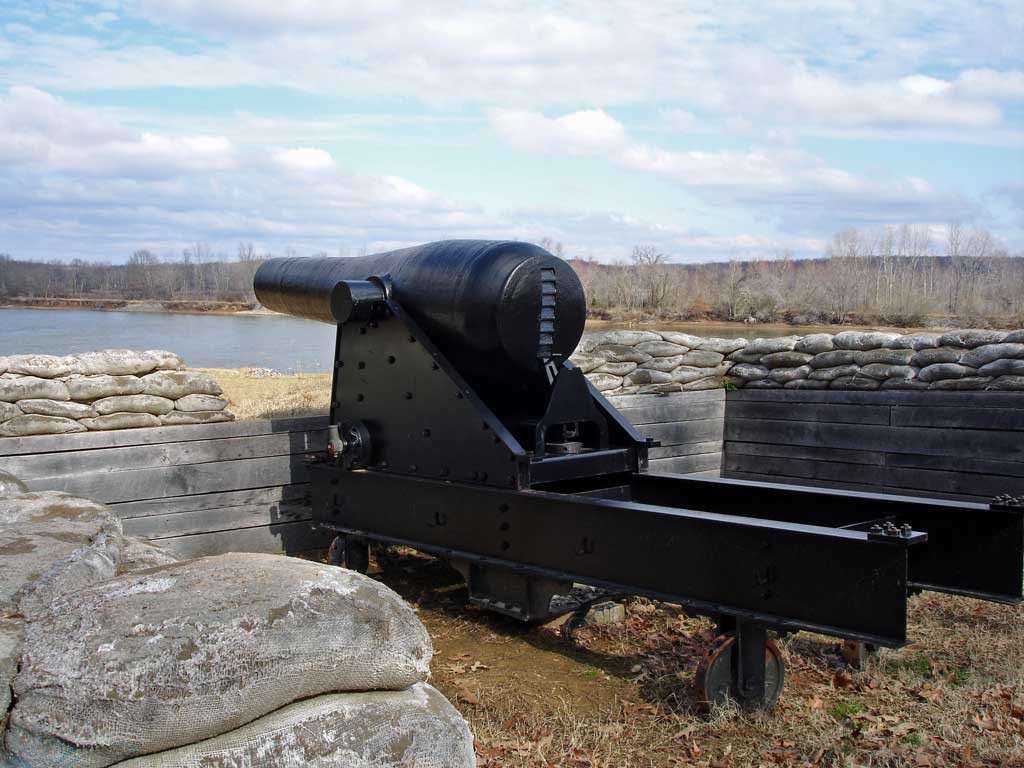

see how many troops they have before I leave. Lieutenant Brady set bridge on
fire, but it is burning very slowly and will probably go out before it falls.
W. H. ALLEN.In mid-afternoon the gunboats rounded a sharp bend in the river opposite Linwood landing, several miles below Clarksville. Directly ahead loomed a high bluff, its crest scarred by a recently erected earthwork-Fort Defiance. As the bluejackets manning the Cairo’s bow battery trained their guns on the fortification, the lookouts saw a white flag snapping in the breeze.
 The Stronghold had been evacuated the day before. On the boats steamed passing the forts’ silent guns. As they approached the confluence of the Red and Cumberland Rivers, the federals sighted a second earthwork, Fort Clark. Here no flag was flying. As the Cairo and Conestoga were heaving to, a “very dirty white flag” crept slowly up the staff. Flag officer Foote sent a party lead by Lieutenant
The Stronghold had been evacuated the day before. On the boats steamed passing the forts’ silent guns. As they approached the confluence of the Red and Cumberland Rivers, the federals sighted a second earthwork, Fort Clark. Here no flag was flying. As the Cairo and Conestoga were heaving to, a “very dirty white flag” crept slowly up the staff. Flag officer Foote sent a party lead by Lieutenant  Phelps to take possession of the fort and to raise the Stars and Stripes. From the townspeople the sailors learned at Fort Clark a strong wind had blown down the white flag and it had been soiled by the heavy rain of the previous evening.On reaching Clarksville I sent for the authorities of the City, and soon after the Hon. Cave Johnson, the mayor, and Judge Wisdom came aboard, stating that the rebel soldiers had left the City,
Phelps to take possession of the fort and to raise the Stars and Stripes. From the townspeople the sailors learned at Fort Clark a strong wind had blown down the white flag and it had been soiled by the heavy rain of the previous evening.On reaching Clarksville I sent for the authorities of the City, and soon after the Hon. Cave Johnson, the mayor, and Judge Wisdom came aboard, stating that the rebel soldiers had left the City, and with the portion of the defeated army which had escaped from Fort Donelson, had fled to Nashville, after having wantonly burned the splendid railroad bridge near the City, against the remonstrance of the citizens. I further ascertained that two-thirds of the citizens had fled from the place panic-stricken. In short, the City was in a state of the wildest commotion from the rumors that we would not respect the citizens either in their persons or their property.
and with the portion of the defeated army which had escaped from Fort Donelson, had fled to Nashville, after having wantonly burned the splendid railroad bridge near the City, against the remonstrance of the citizens. I further ascertained that two-thirds of the citizens had fled from the place panic-stricken. In short, the City was in a state of the wildest commotion from the rumors that we would not respect the citizens either in their persons or their property.
I assured those gentleman that we came not to destroy anything but tents, military stores, and many equipments. With this assurance they earnestly importuned me to issue a proclamation embodying  my views and intentions to the citizens, that the confidence and quiet of the community might be
my views and intentions to the citizens, that the confidence and quiet of the community might be  restored. I was constrained, contrary to my predetermination of never writing such a document, to issue the proclamation of which the inclosed is a copy.
restored. I was constrained, contrary to my predetermination of never writing such a document, to issue the proclamation of which the inclosed is a copy.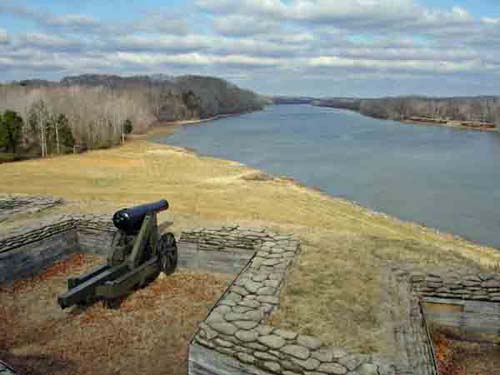
 my views and intentions to the citizens, that the confidence and quiet of the community might be
my views and intentions to the citizens, that the confidence and quiet of the community might be  restored. I was constrained, contrary to my predetermination of never writing such a document, to issue the proclamation of which the inclosed is a copy.
restored. I was constrained, contrary to my predetermination of never writing such a document, to issue the proclamation of which the inclosed is a copy.
I leave this morning with the Conestoga to bring up one or two ironclad gunboats with the vessel and six mortar boats, and then proceed with all possible dispatch up the Cumberland River to Nashville, and, in conjunction with the army, make an attack on Nashville. The rebels have great terror of the gunboats, as will be seen in their papers. One of them a short distance above Fort Donelson had previously fired an iron-rolling mill belonging to the Hon. John Bell.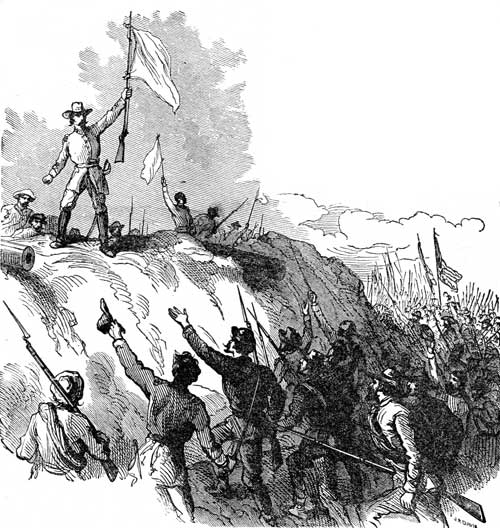

I am, very respectfully, your obedient servant,
A. H. FOOTE, Flag-Officer, Cmdg. Naval Forces Western Waters.]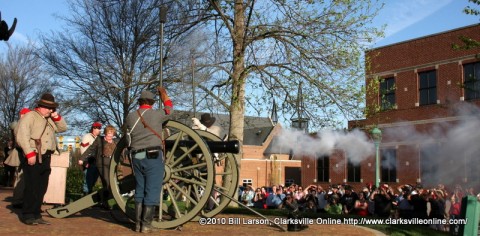

P. S. -I write in great hurry, as mail-boat is waiting.General Charles Ferguson Smith was placed in command of the city.
The Federals took over the fort and enlarged it so that it would control traffic on the Hopkinsville Pike.
Clarksville was left with a small garrison of Union Troops. In April 1862, this small garrison was made up of the 71st Ohio Volunteers commanded by Col. Rodney Mason. During July and August 1862, there was an increase in guerrilla activity around Clarksville. On August 18, 1862, Clarksville was re-capturered by Confederate Calvary. Col. Mason was cashiered for surrendering Clarksville so easily.
During July and August 1862, there was an increase in guerrilla activity around Clarksville. On August 18, 1862, Clarksville was re-capturered by Confederate Calvary. Col. Mason was cashiered for surrendering Clarksville so easily.

Union soldiers were sent from Fort Donelson to retake Clarksville in September 1862. Skirmishes  were fought at New Providence on September 6, 1862 and at Riggins Hill on September 7, 1862. The town and fort were reoccupied by Federal troops who remained for the rest of the war. Col. Bruce was placed in command at Clarksville and Fort Defiance was renamed Fort Bruce.
were fought at New Providence on September 6, 1862 and at Riggins Hill on September 7, 1862. The town and fort were reoccupied by Federal troops who remained for the rest of the war. Col. Bruce was placed in command at Clarksville and Fort Defiance was renamed Fort Bruce.
 were fought at New Providence on September 6, 1862 and at Riggins Hill on September 7, 1862. The town and fort were reoccupied by Federal troops who remained for the rest of the war. Col. Bruce was placed in command at Clarksville and Fort Defiance was renamed Fort Bruce.
were fought at New Providence on September 6, 1862 and at Riggins Hill on September 7, 1862. The town and fort were reoccupied by Federal troops who remained for the rest of the war. Col. Bruce was placed in command at Clarksville and Fort Defiance was renamed Fort Bruce.The presence of Northern troops at the fort made it a safe-haven for freed slaves, who came there seeking the protection of Union forces.

After the civil war ended the property became overgrown and mostly forgotten.In 1952 Judge Sam Boaz purchased the land Fort Defiance resides upon. Years later, in 1982 Boaz asked the Dr. Howard Winn, and Dr. Richard Gildrie from Austin Peay State University to come take a look and see rumors the property had an old Civil War fort on it were true, and if so was it historically BJ1pTHLEK!~~_1.jpg) important.
important.
BJ1pTHLEK!~~_1.jpg) important.
important.The professors hunted along the top of the hill overlooking the Cumberland River. What they found 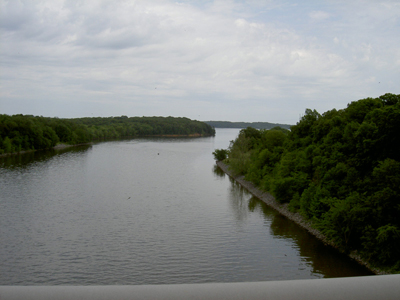 was a area with a dense wild tangle of bushes and sapling trees, some 10 to 12 feet tall, that blocked out the sun and made it nearly impossible to hike through without machetes and axes. They hacked their way through that mess until they located the old earthen walls and communication trenches.
was a area with a dense wild tangle of bushes and sapling trees, some 10 to 12 feet tall, that blocked out the sun and made it nearly impossible to hike through without machetes and axes. They hacked their way through that mess until they located the old earthen walls and communication trenches.
 was a area with a dense wild tangle of bushes and sapling trees, some 10 to 12 feet tall, that blocked out the sun and made it nearly impossible to hike through without machetes and axes. They hacked their way through that mess until they located the old earthen walls and communication trenches.
was a area with a dense wild tangle of bushes and sapling trees, some 10 to 12 feet tall, that blocked out the sun and made it nearly impossible to hike through without machetes and axes. They hacked their way through that mess until they located the old earthen walls and communication trenches.
That’s when the real work began. The terrain was so thick and impassable; it took the professors, APSU students, volunteers and Boy Scouts about five hours to hack a short path to the fort’s entrance. And then there were the chiggers – little tick-like mites that attach themselves and chew on a person’s exposed skin. “I came out to clean this up that first day,” Winn said. “By the time I left, I was so covered with chiggers. And then, to top that off, we brought the mayor out. Mayor (Ted) Crozier called me up that night because he got all the chiggers I didn’t have.” Gildrie said they counted 106 chiggers on Winn while he and Kemmerly escaped with only about four or five bites.Gildrie remembered telling Judge Boaz about the rediscovery, “We told him ‘Yes! It is very important’,” so in 1984 he deeded the property to the City of Clarksville.

Kemmerly joined the project that summer because it became clear to the history professors that they needed someone to help them identify what was natural and what was man-made at the site.“We figured we needed a geologist, someone who could do proper mapping,” Gildrie said. “Phil is an outstanding geologist Fort Defiance earthen walls.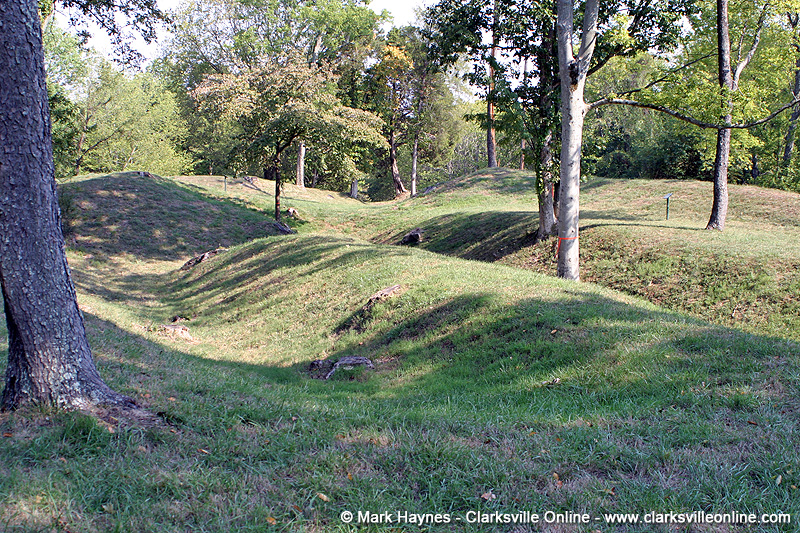

After the fall of Fort Donelson, Fort Defiance was abandoned prior to the capture of Clarksville.  On February 19th, 1862, Federal gunboats including the Conestoga
On February 19th, 1862, Federal gunboats including the Conestoga 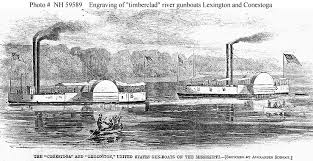 and Cairo; and according to some reports the Steamer St. Louis; came up river from Fort Donelson, arriving around 4:30pm. When the Union Gunboats were sighted Confederate troops set fire to the two railroad bridges in Clarksville.On the 14th of August I was ordered to send two more divisions to Buell. They were sent the same day by way of Decatur. On the 22d Colonel Rodney Mason surrendered Clarksville with six companies of his regiment
and Cairo; and according to some reports the Steamer St. Louis; came up river from Fort Donelson, arriving around 4:30pm. When the Union Gunboats were sighted Confederate troops set fire to the two railroad bridges in Clarksville.On the 14th of August I was ordered to send two more divisions to Buell. They were sent the same day by way of Decatur. On the 22d Colonel Rodney Mason surrendered Clarksville with six companies of his regiment
 On February 19th, 1862, Federal gunboats including the Conestoga
On February 19th, 1862, Federal gunboats including the Conestoga .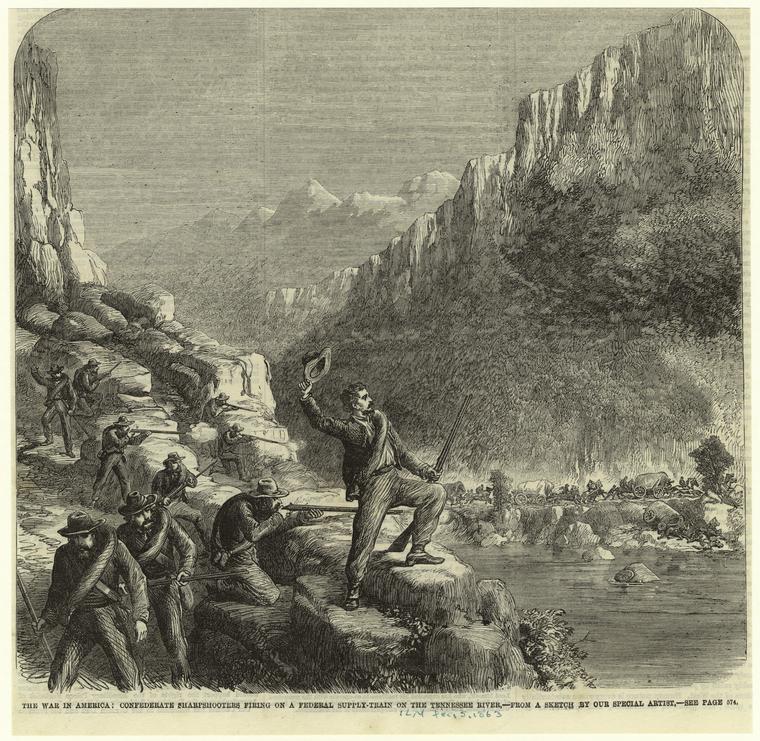

Colonel Mason was one of the officers who had led their regiments off the field at almost the first fire of the rebels at Shiloh.
![[Uniforms of the Con]federate army.](http://images.nypl.org/index.php?id=830282&t=w) He was by nature and education a gentleman, and was terribly mortified at his action when the battle was over. He came to me with tears in his eyes and begged to be allowed to have another trial.
He was by nature and education a gentleman, and was terribly mortified at his action when the battle was over. He came to me with tears in his eyes and begged to be allowed to have another trial.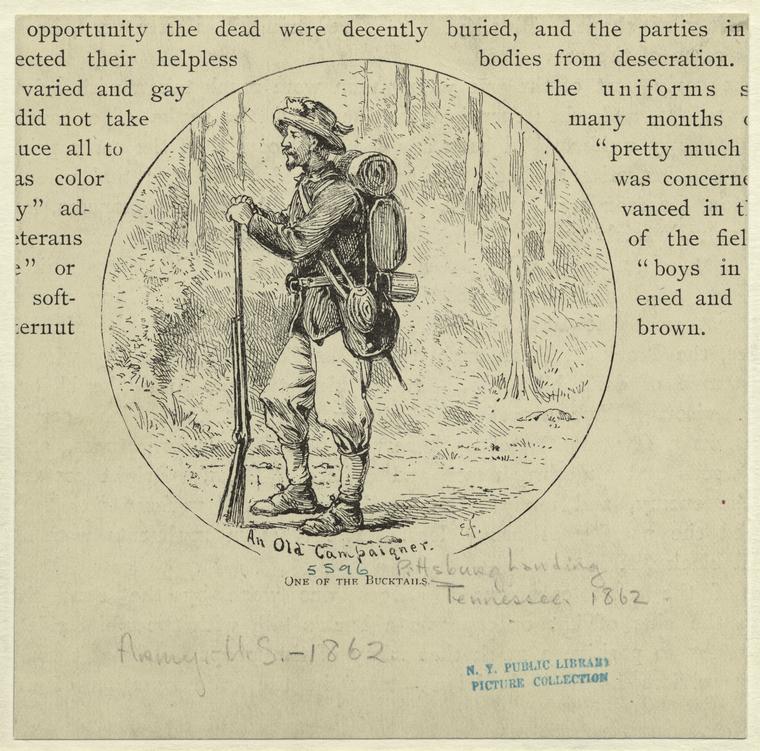 I felt great sympathy for him and sent him, with his regiment, to garrison Clarksville and Donelson.
I felt great sympathy for him and sent him, with his regiment, to garrison Clarksville and Donelson.  He selected Clarksville for his headquarters, no doubt because he regarded it as the post of danger, it being nearer the enemy.
He selected Clarksville for his headquarters, no doubt because he regarded it as the post of danger, it being nearer the enemy.

But when he was summoned to surrender by a band of guerillas, his constitutional weakness overcame him. He inquired the number of men the enemy had, and receiving a response indicating a force greater than his own he said if he could be satisfied of that fact he would surrender. Arrangements were made for him to count the guerillas, and having satisfied himself that the enemy had the greater force he surrendered and informed his subordinate at Donelson of the fact, advising him to do the same. The guerillas paroled their prisoners and moved upon Donelson, but the officer in command at that point marched out to meet them and drove them away
.
![[Uniforms of the Con]federate army.](http://images.nypl.org/index.php?id=830282&t=w) He was by nature and education a gentleman, and was terribly mortified at his action when the battle was over. He came to me with tears in his eyes and begged to be allowed to have another trial.
He was by nature and education a gentleman, and was terribly mortified at his action when the battle was over. He came to me with tears in his eyes and begged to be allowed to have another trial. I felt great sympathy for him and sent him, with his regiment, to garrison Clarksville and Donelson.
I felt great sympathy for him and sent him, with his regiment, to garrison Clarksville and Donelson.  He selected Clarksville for his headquarters, no doubt because he regarded it as the post of danger, it being nearer the enemy.
He selected Clarksville for his headquarters, no doubt because he regarded it as the post of danger, it being nearer the enemy.
But when he was summoned to surrender by a band of guerillas, his constitutional weakness overcame him. He inquired the number of men the enemy had, and receiving a response indicating a force greater than his own he said if he could be satisfied of that fact he would surrender. Arrangements were made for him to count the guerillas, and having satisfied himself that the enemy had the greater force he surrendered and informed his subordinate at Donelson of the fact, advising him to do the same. The guerillas paroled their prisoners and moved upon Donelson, but the officer in command at that point marched out to meet them and drove them away
.

Among other embarrassments, at the time of which I now write, was the fact that the government wanted to get out all the cotton possible from the South and directed me to give every facility toward that end. Pay in gold was authorized, and stations on the Mississippi River and on the railroad in our possession had to be designated where cotton would be received. This opened to the enemy not only the means of converting cotton into money, which had a value all over the world and which they so much needed, but it afforded them means of obtaining accurate and intelligent information in regard to our position and strength. It was also demoralizing to the troops. Citizens obtaining permits from the treasury department had to be protected within our lines and given facilities to get out cotton by which they realized enormous profits. Men who had enlisted to fight the battles of their country did not like to be engaged in protecting a traffic which went to the support of an enemy they had to fight, and the profits of which went to men who shared none of their dangers.
On the 30th of August Colonel M. D. Leggett, near Bolivar, with the 20th and 29th Ohio volunteer infantry, was attacked by a force supposed to be about 4,000 strong. The enemy was driven away with a loss of more than one hundred men. On the 1st of September the bridge guard at Medon was attacked by guerillas. The guard held the position until reinforced, when the enemy were routed leaving about fifty of their number on the field dead or wounded, our loss being only two killed and fifteen wounded. On the same day Colonel Dennis, with a force of less than 500 infantry and two pieces of artillery, met the cavalry of the enemy in strong force, a few miles west of Medon, and drove them away with great loss. Our troops buried 179 of the enemy's dead, left upon the field. Afterwards it was found that all the houses in the vicinity of the battlefield were turned into hospitals for the wounded. Our loss, as reported at the time, was forty-five killed and wounded. On the 2d of September I was ordered to send more reinforcements to Buell. Jackson and Bolivar were yet threatened, but I sent the reinforcements. On the 4th I received direct orders to send Granger's division also to Louisville, Kentucky.
The Battle of Cedar Grove had dealt horrendous losses to the Northern Army of the Ohio. As a result, William Rosecrans was relieved of command and placed in a divisional position, and George H. Thomas took command of the army. Still, things were incredibly grim for the Northern army. For four days the army had retreated through upper Tennessee, following the Cumberland River. On the seventeenth, Thomas took a platform and gave a long and powerful speech to encourage his troops to fight hard. Thomas still needed a successful battle to turn the tide of the war, and he expected to get one in the morningAt approximately 9:30 a.m. on the eighteenth, Thomas attacked his pursuers. He sent a brigade under General McCook as well as one under General Van Cleve, and attacked the salient on the Confederate left. Early in the battle Thomas was wounded, and Rosecrans took up temporary command. Both brigades punched through, routing the Confederate troops. Only the brigade under General Benjamin Cheatham managed to pull up in time and slow the breakthrough. Still, his division would not hold for long. Reinforcements trickled in to aid him, but Bragg also had to contend with an attack on his right. A division under General Crittenden had slammed into the Confederate lines, the two sides seesawing back and forth over a creek for much of the battle. By the time it had seemed that General Van Cleeve had broken the lines of Cheatham's division, night had fallen.An irritant Braxton Bragg fell back into the confines of Clarksville, following his fierce battle outside the city the day before. Both Bragg and Thomas had spent the next day laying down siege lines. During this time Bragg sent an envoy to Richmond, begging for reinforcements.
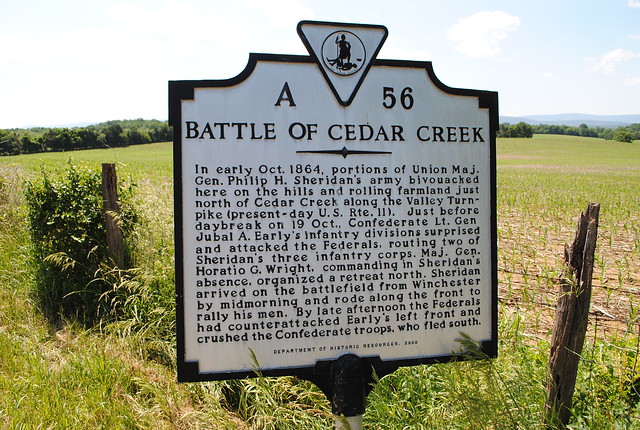
On the 21st, Bragg had had enough of the siege, and attacked the Union center at Garrett's Farm. Although the Union lines appeared thin in the center, the reverse was true. And that very place is where Thomas had predicted where Bragg would attack. The charging Confederates were mowed down by artillery, and by the time they reached the Union lines, there were hardly any left. The Union soldiers countercharged and forced the thinned out Confederates back to their lines. Bragg is inconsolable the rest of the day.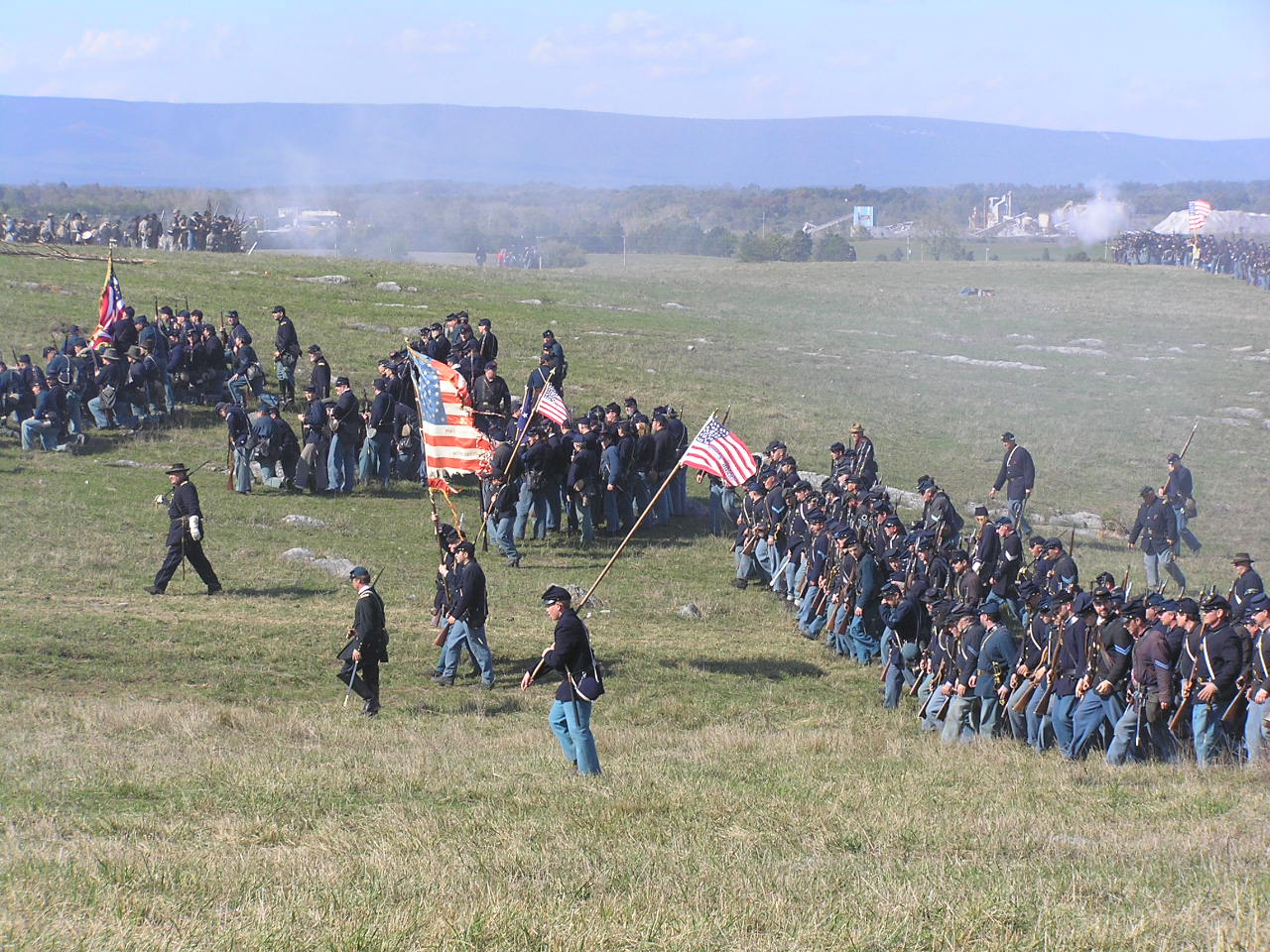

Bragg, on the 23, attempts an outflanking maneuver over the Union right. The unfortunate Confederates, however, have go through a swamp. They are slowed down and the attack doesn't come until late afternoon. The Confederates, worn and exhausted, put up as best a fight as they can, but they are turned back into the swamp, where they take up positions and keep the Union soldiers at bay by practicing guerilla warfare.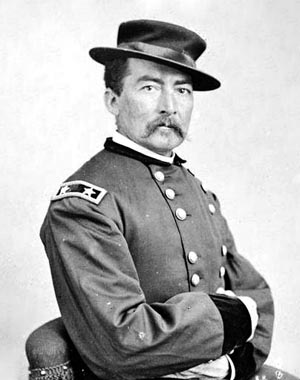

On the 24, reinforcements from Richmond began to flow into Tennessee, although many would not reach Clarksville by the end of the day. The one entire corps that arrived was the cavalry under Nathan Bedford Forrest. Forrest and Patrick Cleburne attempted a pincer movement on the Union lines, Cleburne flanking the salient at Garrett's Farm,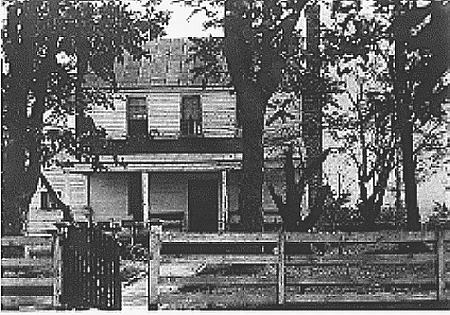 Forrest rolling up the siege lines to the south of Clarksville. After a day of fierce fighting, Cleburne was forced to retreat. Forrest, on the other hand, had repeatedly crushed Union soldiers throughout the afternoon and removed the threat to the Clarksville train station.
Forrest rolling up the siege lines to the south of Clarksville. After a day of fierce fighting, Cleburne was forced to retreat. Forrest, on the other hand, had repeatedly crushed Union soldiers throughout the afternoon and removed the threat to the Clarksville train station.
 Forrest rolling up the siege lines to the south of Clarksville. After a day of fierce fighting, Cleburne was forced to retreat. Forrest, on the other hand, had repeatedly crushed Union soldiers throughout the afternoon and removed the threat to the Clarksville train station.
Forrest rolling up the siege lines to the south of Clarksville. After a day of fierce fighting, Cleburne was forced to retreat. Forrest, on the other hand, had repeatedly crushed Union soldiers throughout the afternoon and removed the threat to the Clarksville train station.
Thomas, unsettled by the flow of reinforcements and the loss of his troops threatening the train station, ordered a charge to take it back. The attacks were fierce, but by noon, the Union momentum was all but gone. General Cheatham and Forrest led a sweeping counterattack, almost breaking the Union ranks. But the Union lines held firm at Deep Hill Swamp and Reed Creek. Reinforcements from Robert E. Lee's Army of Northern Virginia had arrived earlier that day, and Bragg ordered General Ewell to attack Garrett's Farm. Ewell almost didn't do it, seeing the other failed attempts. Still, his troops marched on Garrett's Field, and broke the thinned out Union center. Forrest's cavalry and Ewell's division came together in a pincer movement and captured the nearly five thousand Union soldiers at Reed Creek. Ewell, however, was mortally wounded in the fighting. Thomas, sensing defeat, managed to successfully withdraw his army from the siege without it being routed.
The repurcussions of the engagement rang loud and clear. The Union army under Thomas retreated into Kentucky, hoping Bragg would attack there. But Bragg had no reason to leave Clarksville. After two days, British Parliament heard of the battle and subsequently passed the resolution that recognized the Confederacy. It, for all intents and purposes, ended the war. Braxton Bragg became a national hero, along with Patrick Cleburne, Benjamin Cheatham, and Nathan B. Forrest. There was even a martyr, Richard Ewell. The Confederacy's dream had finally come true.

The Battle of Clarksville was a bloody and confused mess. With almost five thousand casualties total, the battle was not the bloodiest, but in improving the morale of northern troops it was decisive. Although Bragg retreated first, theoretically making him the loser, by nightfall no one had achieved the upper hand, and battle lines were almost as they were preceding the battle. Thomas would ride on this victory and besiege Bragg and his forces in Clarksville, not knowing that this encounter would be the bloodiest he ever endured.

More than 305 Confederate soldiers who died in Confederate hospital in Clarksville, Montgomery County, Tennessee, were buried in the garden behind the Clarksville Female Academy. Two African-American women, sisters, who contracted disease and died while caring for the ill and wounded the soldiers at hospital were also buried there.

The initial graves were marked with wooden headboard but in time these deteriorated and specific knowledge of burial locations was lost. In 1897, a landslide exposed some of the soldiers' remains. One hundred and twenty seven [127] unidentified remains were found, disinterred, and re-interred in the Clarksville City Cemetery [present-day Clarksville Riverview Cemetery]. The remains of the other 180+ Confederate soldiers were not disturbed.
In Spring 2000, despite protest from local citizens, the City of Clarksville started construction of a new road bridge which resulted in the Confederate soldiers' burial site behind the historic Clarksville Female Academy being covered with tons of soil and concrete structural elements. The City later agreed to name the bridge the Confederate Soldier Memorial Bridge.
On Saturday, 26 May 2001, markers with two bronze plaques, listing 307 names, was dedicated in Riverview Cemetery to document and memorialize the dead from Clarksville Confederate hospital. The dedication service was held by the Clarksville, Montgomery County, chapter of the Sons of Confederate Veterans, the Frank P. Gracey Camp 225.
On Sunday, 15 December 2002, a memorial monument was dedicated to honor the memory of the more than 180 Confederate soldiers and the two nurses who are buried beneath the Confederate Soldiers Memorial Bridge on Cumberland Drive. The monument is located near their burial site, about 200 yards south of the rear of the 19th century location of the Clarksville Female Academy. Animage of the memorial and its text are below.
Subscribe to:
Comments (Atom)